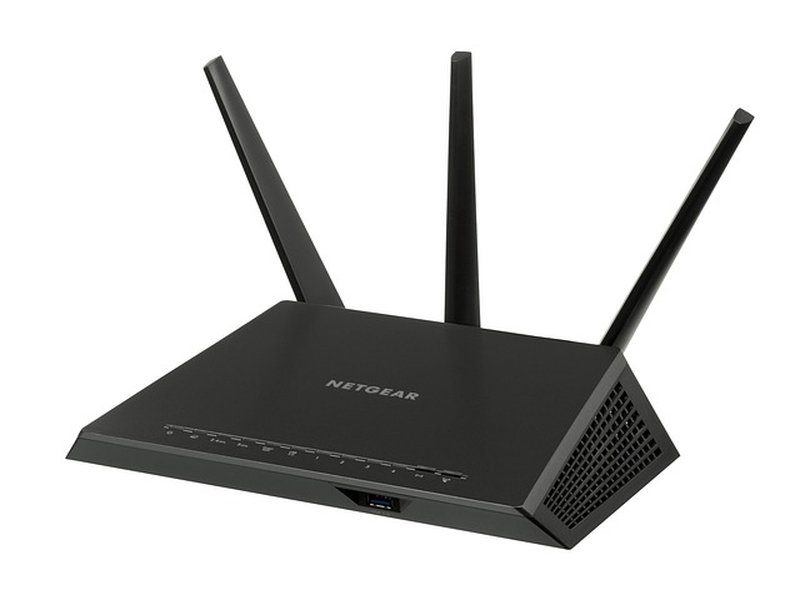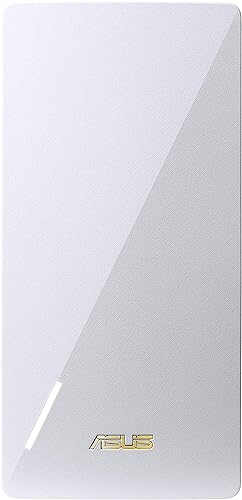If your Mac won’t connect to Wi-Fi, ensure it is within range and check if Wi-Fi is available in Network settings. Restarting the AirPort base station or AirPort Time Capsule may also help.
Check Network Availability And Range
When it comes to troubleshooting Wi-Fi connectivity issues on your Mac, one of the first things you need to check is the network availability and range. Ensure that your Mac is within range of the wireless network and verify if Wi-Fi is available in Network settings.
Ensure That Your Mac Is Within Range Of The Wireless Network
To connect to a Wi-Fi network, your Mac needs to be within range of the wireless signal. Signal strength can be affected by various factors such as the distance between your Mac and the wireless router, obstructions like walls or furniture, and interference from other electronic devices. Make sure that your Mac is in close proximity to the wireless router to ensure a strong and stable connection.
Verify If Wi-fi Is Available In Network Settings
If you don’t see the Wi-Fi option in your Network settings, it could indicate that there may be an issue with your Mac’s network adapter or driver. Follow these steps to troubleshoot:
- Click on the Apple menu in the top left corner of your screen and select “System Preferences”.
- Click on the “Network” icon.
- In the Network settings window, check if Wi-Fi is listed on the left-hand side. If it is not visible, click on the “+” button at the bottom left to add a new network interface. Select “Wi-Fi” from the list of interface options.
- If Wi-Fi is already listed, make sure it is enabled by checking the checkbox next to it.
Once you have verified that Wi-Fi is available in Network settings, you can proceed with further troubleshooting steps to fix the connectivity issue.
Restart Airport Base Station Or Airport Time Capsule
If you’re experiencing connection issues with the wireless network created by an AirPort base station or AirPort Time Capsule, restarting the device by unplugging the power cord may help resolve the problem. Sometimes, a simple reboot can solve network-related issues that prevent your Mac from connecting to Wi-Fi. Follow these steps to restart your AirPort base station or AirPort Time Capsule:
Step 1: Locate The Power Cord
First, locate the power cord attached to your AirPort base station or AirPort Time Capsule. The power cord is usually located at the back of the device.
Step 2: Unplug The Power Cord
Next, gently unplug the power cord from the device. Wait for at least 10 seconds before proceeding to the next step. This brief pause allows your AirPort base station or AirPort Time Capsule to power down completely.
Step 3: Plug In The Power Cord
After the 10-second wait, plug the power cord back into the device. Ensure that it is securely connected to the AirPort base station or AirPort Time Capsule.
Step 4: Wait For The Device To Restart
Allow the device a few moments to completely restart. This process usually takes a minute or two. You will know that the device has successfully restarted when the LED lights on the front panel or top of the device stop blinking and become steady.
Once the AirPort base station or AirPort Time Capsule has restarted, try reconnecting your Mac to the Wi-Fi network. Go to the Wi-Fi settings on your Mac and select the network you want to join. Enter the password if prompted and click “Connect.” Your Mac should now be able to connect to the Wi-Fi network created by the AirPort base station or AirPort Time Capsule.
If you are still experiencing difficulties connecting to Wi-Fi after restarting the device, there may be other underlying issues that need to be addressed. In such cases, it is recommended to consult Apple Support or seek professional assistance to resolve the problem.
Run Wireless Diagnostics
If you’re wondering why your Mac won’t connect to WiFi, Run Wireless Diagnostics to troubleshoot the issue. Ensure that your Mac is within range of the wireless network and check if the Wi-Fi service is available in Network settings. Restarting the AirPort base station or AirPort Time Capsule may also help.
Use Wireless Diagnostics Tool To Troubleshoot Connectivity Problems On Your Mac
If you’re wondering why your Mac won’t connect to Wi-Fi, one effective solution is to run the Wireless Diagnostics tool. This handy tool can help you identify and fix connectivity issues, allowing you to get back online in no time. To run Wireless Diagnostics on your Mac, simply follow these steps:
1. Go to the menu bar and click on the Wi-Fi icon.
2. Press and hold the Option key on your keyboard.
3. Click on “Open Wireless Diagnostics” from the drop-down menu that appears.
Set Up Wireless Monitoring To Identify Possible Network Issues
In some cases, your Mac might not connect to Wi-Fi due to network-related problems. By setting up Wireless Monitoring, you can easily identify potential issues and take steps to resolve them. To set up Wireless Monitoring on your Mac, follow the steps below:
1. Follow the instructions mentioned above to open the Wireless Diagnostics tool.
2. Once the tool is open, click on “Window” from the menu bar.
3. Select “Utilities” and then choose “Wireless Diagnostics.”
4. Click on “Continue” to start the monitoring process. By enabling Wireless Monitoring, your Mac will keep a watchful eye on your network and provide you with valuable insights into its performance.
This will help you pinpoint any issues that may be causing connectivity problems. In conclusion, running the Wireless Diagnostics tool and setting up Wireless Monitoring are two effective methods to troubleshoot Wi-Fi connectivity problems on your Mac. By following these steps, you can easily identify and resolve any issues that might be preventing your Mac from connecting to Wi-Fi.
Verify Internet Connection
Ensure your Mac is within the wireless network’s range and check if the Wi-Fi service is available in Network settings. Restart your AirPort base station or AirPort Time Capsule if you’re connecting to a network created by them. If you’re still facing issues, refer to Apple Support for troubleshooting steps.
Check The Wi-Fi icon On Your Mac To See Which Network You Are Connected To
When troubleshooting why your Mac won’t connect to Wi-Fi, it’s important to first verify the internet connection. This can be done by checking the Wi-Fi icon on your Mac to see which network you are currently connected to. Here’s how you can do it:
1. Look for the Wi-Fi icon in the menu bar of your Mac. It looks like a series of vertical bars.
2. Click on the Wi-Fi icon to display the available networks.
3. Take note of the network name that is currently highlighted or checked. This is the network your Mac is connected to.
4. If you are unsure whether this is the correct network, you can hover your mouse over the network name to see a tooltip with additional information, such as the network’s security type.
Ensure That The Internet Connection Matches The Correct Network
Once you have identified the network your Mac is connected to, it’s essential to ensure that the internet connection matches the correct network. Here’s what you can do to verify this:
1. Open a web browser, such as Safari or Chrome, on your Mac.
2. Type in a website address, like www.google.com, in the address bar and press Enter.
3. If the webpage loads successfully and you can browse the internet without any issues, then your Mac is connected to the correct network with a working internet connection.
4. However, if the webpage fails to load or you encounter any errors, it’s possible that your Mac is connected to the wrong network or there is an issue with the internet connection itself.
In Conclusion
Verifying the internet connection is an essential step when troubleshooting why your Mac won’t connect to Wi-Fi. By checking the Wi-Fi icon on your Mac and ensuring that the internet connection matches the correct network, you can identify any potential issues and take the necessary steps to resolve them.
Update Software
If you’re wondering why your Mac won’t connect to Wi-Fi, there could be a few reasons. First, ensure that your Mac is within range of the wireless network and check if Wi-Fi is available in Network settings. If you’re connecting to an AirPort base station or AirPort Time Capsule, try restarting the device by unplugging the power cord.
For further troubleshooting, you can refer to Apple Support or try using Wireless Diagnostics for assistance.
Update The Software On Your Mac To Fix Compatibility Issues With Wi-fi Connectivity
If you’re experiencing issues with your Mac’s Wi-Fi connection, one of the first things you should do is update the software on your device. Software updates often come with bug fixes and improvements, including those related to Wi-Fi compatibility. By keeping your software up to date, you can ensure that your Mac is running the latest version with optimized performance.
To update the software on your Mac, follow these steps:
- Click on the Apple menu in the top-left corner of your screen.
- Select “System Preferences” from the drop-down menu.
- In the System Preferences window, click on “Software Update.”
- Your Mac will then check for any available updates.
- If there are updates available, click on “Update Now” to begin the installation process.
- Follow the on-screen instructions to complete the update.
It’s important to note that updating your software may require an internet connection. If you’re unable to connect to Wi-Fi, you may need to use an alternative internet source, such as an Ethernet cable or a mobile hotspot, to download and install the updates.
| Common benefits of updating your Mac’s software include: |
|---|
| – Enhanced security features |
| – Improved performance and stability |
| – Bug fixes and compatibility improvements |
By staying up to date with the latest software releases, you can address any compatibility issues that may be preventing your Mac from connecting to Wi-Fi. Updating your software is an essential troubleshooting step that should not be overlooked.
Use Cleanmymac X For Troubleshooting
Use CleanMyMac X for troubleshooting if your Mac won’t connect to WiFi. Ensure your Mac is within range of the network and check if the WiFi service is available in Network settings. Restart the AirPort base station or AirPort Time Capsule if you’re connecting to a wireless network created by them.
Use Cleanmymac X To Diagnose And Fix Wi-Fi connection Problems On Your Macbook Pro Or Macbook Air
If you’re facing Wi-Fi connectivity issues on your MacBook Pro or MacBook Air, don’t worry. There’s a powerful tool that can help you diagnose and fix these problems with ease. Introducing CleanMyMac X, a software designed specifically to optimize and enhance the performance of your Mac. With CleanMyMac X, you can troubleshoot Wi-Fi connection problems and get back online quickly.
Follow The Instructions To Monitor Your Wi-Fi connection And Resolve Any Issues
Using CleanMyMac X for troubleshooting your Wi-Fi issues is simple. Follow these steps to get started:
- Download and install CleanMyMac X from the official website or the Mac App Store.
- Launch the application and navigate to the “Maintenance” tab.
- Click on the “Wi-Fi” section to access the Wi-Fi monitoring tools.
- Press the “Scan” button to initiate the scanning process.
- Wait for CleanMyMac X to analyze your Wi-Fi connection and identify any issues.
- Once the scan is complete, CleanMyMac X will display a detailed report highlighting any problems it found.
- Review the report and follow the recommended steps to resolve the Wi-Fi connection problems.
- Click on the “Fix” button to automatically apply the suggested fixes.
By monitoring your Wi-Fi connection with CleanMyMac X, you can pinpoint the root cause of the problem and take appropriate action. Whether it’s a misconfigured network, interference from other devices, or outdated Wi-Fi drivers, CleanMyMac X provides you with the information you need to resolve the issue and get back online.
Don’t let Wi-Fi connection problems hinder your productivity or enjoyment of your MacBook Pro or MacBook Air. Trust CleanMyMac X to troubleshoot and fix any Wi-Fi issues, ensuring a seamless and uninterrupted internet experience on your Mac.
Troubleshoot Wi-fi Turning On And Off
If you’re experiencing trouble with your Mac connecting to Wi-Fi, make sure your device is within the range of the wireless network and check if Wi-Fi is available in Network settings. Restart the AirPort base station or AirPort Time Capsule if you’re connecting to a network created by them.
For more troubleshooting steps, visit the Apple Support website.
Resolve Issues When Wi-fi Won’t Turn On Or The Connection Is Slow On Your Mac
Experiencing Wi-Fi issues on your Mac can be incredibly frustrating, especially when you’re in the middle of an important task or trying to stream your favorite show. The good news is that there are several troubleshooting steps you can take to resolve the problem and get back online. In this section, we’ll walk you through the process of fixing Wi-Fi turning on and off on your Mac.
Follow These Steps To Fix Wi-fi Dropping Off On Your Mac:
- Restart your Mac: Sometimes, a simple restart can do wonders. Go to the Apple menu, select “Restart,” and let your Mac turn off and on again. This might help resolve any temporary software glitches that could be affecting your Wi-Fi connection.
- Check your Wi-Fi signal strength: Make sure your Mac is within range of the wireless network. If you’re far away from the router or there are physical obstructions like walls and furniture, it can weaken the signal. Try moving closer to the router and see if that improves your connection.
- Verify Wi-Fi availability: Go to “System Preferences” on your Mac and select “Network.” If you don’t see Wi-Fi listed on the left-hand side, it means that Wi-Fi service is not available. In this case, you may need to troubleshoot your network settings or contact your internet service provider for assistance.
- Restart your AirPort base station or AirPort Time Capsule: If you’re connecting to a wireless network created by an AirPort device, try unplugging the power cord from the device and plugging it back in. This simple step can sometimes resolve connectivity issues.
- Reset your network settings: In some cases, resetting your network settings can help fix Wi-Fi problems on your Mac. To do this, go to “System Preferences” and select “Network.” Click on the Wi-Fi tab, then click on the “-” button to remove Wi-Fi from the list of connections. Finally, click on the “+” button to add Wi-Fi back and re-enter your Wi-Fi network details.
By following these troubleshooting steps, you should be able to resolve issues with Wi-Fi turning on and off on your Mac. Remember to always check your network settings, restart your devices, and ensure that you are within range of the wireless network. If the problem persists, it may be worth contacting your internet service provider for further assistance.
Frequently Asked Questions On Why Won’t My Mac Connect To Wifi
Why Is My Mac Suddenly Not Connecting To Wi-fi?
If your Mac is suddenly not connecting to Wi-Fi, there are a few things you can try. First, make sure your Mac is within range of the wireless network. Next, check if Wi-Fi is available in the Network settings. If you’re connecting to an AirPort base station or AirPort Time Capsule, try restarting the device.
If you still can’t connect, you can follow the steps provided by Apple Support or seek further assistance.
Why won’t My Macbook Pro Connect To Wi-fi But Other Devices Will?
Ensure your Mac is within range of the wireless network and check if Wi-Fi is available in Network settings. Restart the AirPort base station or AirPort Time Capsule if you’re connecting to a network created by them. Try setting up Wireless Monitoring if Wireless Diagnostics doesn’t find any issues.
For further troubleshooting, check out Apple Support articles or seek professional help.
How Do I Force My Mac To Connect To Wi-Fi?
To force your Mac to connect to Wi-Fi, follow these steps:
1. Click the Wi-Fi icon in the menu bar.
2. Choose the network you want to join or click “Other Networks” for nearby networks.
3. Enter the network password if prompted.
4. Click “Join” to connect your Mac to the chosen network. For more information, visit Apple Support.
Why Is My Mac Not Connecting To Wi-fi?
Make sure your Mac is within range of the wireless network and check if Wi-Fi is available in Network settings.
How Do I Fix Wi-Fi Connection Issues On My Mac?
Restart the AirPort base station or AirPort Time Capsule by unplugging the power cord. Ensure your Mac is in range of the wireless network.
Why Can’t My Mac Connect To The Internet Over Wi-Fi?
If your Mac is connected to a Wi-Fi network but can’t access websites or other internet services, it might be a network connectivity issue.
What To Do If My Mac Won’t Connect To The Internet But Other Devices Will?
Check if the Mac is connected to the correct Wi-Fi network. Additionally, you can try restarting your Wi-Fi router or contacting your internet service provider.
How Can I Check Which Wi-fi Network My Mac Is Connected To?
Click on the Wi-Fi icon on your Mac and check if the internet connection matches the correct network you want to connect to.
Why Won’t My Macbook Connect To Wi-Fi after An OS update?
If your MacBook Air won’t connect to Wi-Fi after a software update, try restarting the Wi-Fi connection and ensuring you have the latest software updates.
My Macbook Pro Won’t Connect To Wi-Fi, How Can I Fix It?
Try running Wireless Diagnostics, restart your Wi-Fi router, and make sure you’re within range of the Wi-Fi network you’re trying to connect to.
Final Thoughts
If you are facing issues with your Mac not connecting to WiFi, there are a few potential solutions. First, ensure that your Mac is within range of the wireless network and that the WiFi service is available in your Network settings.
If you’re using an AirPort base station or AirPort Time Capsule, try restarting the device. Additionally, you can use the Wireless Diagnostics tool to troubleshoot the issue further. By following these steps, you should be able to resolve the connectivity problem and get your Mac back online quickly.






Leave a Reply
You must be logged in to post a comment.